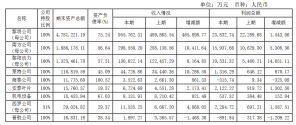The easiest air attack loyal wingman configuration achievable is probably to have the fast stealthy uav like the FH-97A fly towards target much like it itself was the missile until wvr, then deploy the small aam that you see under the belly. That's probably why the missiles carried are so small and also why they have optical/ir targeting. The uav don't have to worry about high g force and can spam large amounts of small ir missiles that seeks by itself, essentially spam fire and forget then on to next target.
This may well be a temporary stop-gap solution until development of uavs that can fight like a conventional piloted jet in the traditional sense.
The j20 and loyal wingman may play the sneak one and approach targets from behind, where the ir seekers would be most useful. So j20 would be part of larger detection and info sharing assets network.
Strategic support force indeed
This may well be a temporary stop-gap solution until development of uavs that can fight like a conventional piloted jet in the traditional sense.
The j20 and loyal wingman may play the sneak one and approach targets from behind, where the ir seekers would be most useful. So j20 would be part of larger detection and info sharing assets network.
Strategic support force indeed
Last edited:

